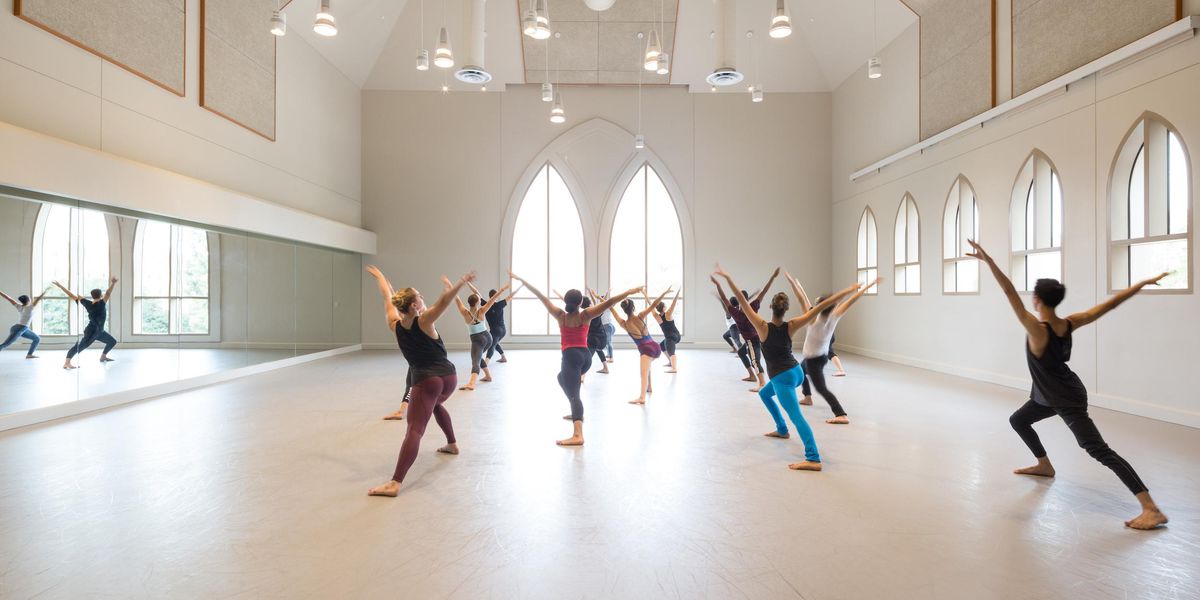Two of a Kind
Side Show’s conjoined twins presented a choreographic challenge.
Emily Padgett and Erin Davie as the Hilton sisters, with Matthew Hydzik. Photo by Joan Marcus, Courtesy Kennedy Center.
Two bodies inhabiting two pairs of stitched-together boxer shorts. That’s how Anthony Van Laast, a Brit with deep roots in Graham technique, and his longtime associate, the ballet-trained Janet Rothermel, began choreographing the revival of Side Show, which opens at the St. James this month after an acclaimed run at the Kennedy Center. Those who recall the original Broadway incarnation, in 1997, will get it instantly: Side Show tells the moving story of Violet and Daisy Hilton, the conjoined twins who became famous in the 1920s as a freak-show attraction and then traded their notoriety for a serious career singing and dancing in 1930s vaudeville. How do you dance when you’re attached at the hip to your sister? That’s what Van Laast wanted to find out by sharing the boxers with Rothermel, who had sewn an elastic band between the briefs to mimic the band of flesh that bound the Hiltons.
It wasn’t the first time the choreographer had donned an alien outfit in pursuit of authenticity. For Sister Act he’d experimented wearing a habit. But the sister act in Side Show was a different order. “When people are joined that way,” he says, “it’s very difficult. You think it will be easy, but it’s not. We spent a few days in workshop like that, we walked around, and I experienced what it was like to move in that way. Unbelievably difficult.”
Walking was hard, choreographing even harder. Once his body was acquainted with the physics of the partnership at the show’s heart, Van Laast brought in an old friend, Kim Craven, to join Rothermel in the boxer shorts. “I worked on the two of them,” he says, “because actually wearing it, I found I was too involved in trying to figure out what to do. Once I could start watching, I was freer to choreograph.”
When rehearsals began, Erin Davie, who plays Violet, and Emily Padgett, who plays Daisy, were also attached. “It was quite funny,” Van Laast notes, “because when one wanted a cup of coffee, they both had to go. When one wanted to go and read a book, they had to go and read a book together. And when one wanted to go to the bathroom, they had to go to the bathroom together. Through that process, they found a way of actually being able to move together—and then it was easier to choreograph them.”
If the physical reality posed choreographic challenges, so did the plotting. The show, with music by composer Henry Krieger and lyricist Bill Russell, has been extensively revamped, with input from director Bill Condon (who directed the movie version of Krieger’s Dreamgirls). But the story still follows Violet and Daisy from the seamy world of the sideshow to the more professional realm of vaudeville. Van Laast decided to look at the show in two parts. The sideshow attractions in the opening section include a three-legged man and a pair of little people playing “The World’s Smallest Cossack Dancers.” Apart from the Cossacks, he says, “the attractions weren’t actually going to be doing what one would describe as routines. Rather than straight dance, it’s more movement, really specific to the characters. The main choreography for the show would be when the twins head towards vaudeville.”
That was tricky, too, Van Laast says, because “Emily is a full-on dancer and Erin is less of a mover.” And, “they had to be not very good at the beginning and then get better as the show went on. The challenge was to do a routine in which you see them being not very good. But that’s not very satisfactory for the audience to watch.” His solution for the soft-shoe and other period-appropriate steps was “a sort of naïveté of movement that was still entertaining and showed potential, but didn’t look bad.” Watching it, he notes, “nobody in the world except anybody in our world” would understand the difficulties involved.
The real Hilton sisters ultimately became the highest-paid artists in vaudeville, Van Laast points out. “And they were absolutely fantastic.” But the Broadway audience isn’t going to see the steps their audiences saw. “What was acceptable and exciting in those days is not really acceptable and exciting now,” Van Laast says. “One has to theatricalize.”
From Backstage
Dance captain:
Brandon Bieber, who plays one of the sideshow attractions, The Three-Legged Man
Associate choreographer:
Janet Rothermel, who worked with Van Laast as a swing on Joseph and the Amazing Technicolor Dreamcoat, as dance captain on Mamma Mia! and as associate choreographer on Sister Act
Cast:
20, plus two swings
Specialties:
“I’ve got four boys who are primarily cast for their dancing ability,” says Van Laast. “I was looking for four very strong male dancers who could also tap.”
Pre-show warm-up:
“Because they’re such a diverse group, I let them do their own warm-up. We have every single shape and size, and we also have small people.”
Anthony Van Laast. Photo by Scott Suchman, Courtesy O+M Co.




